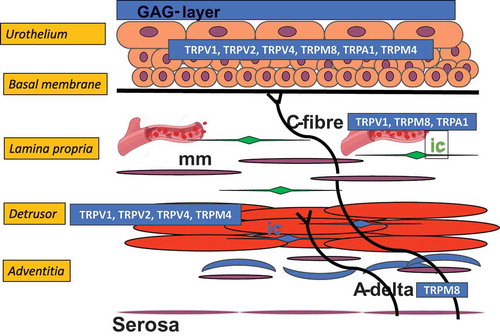Figures & data
Table 1. Preclinical and Clinical information of TRP channel agonist and antagonists.

